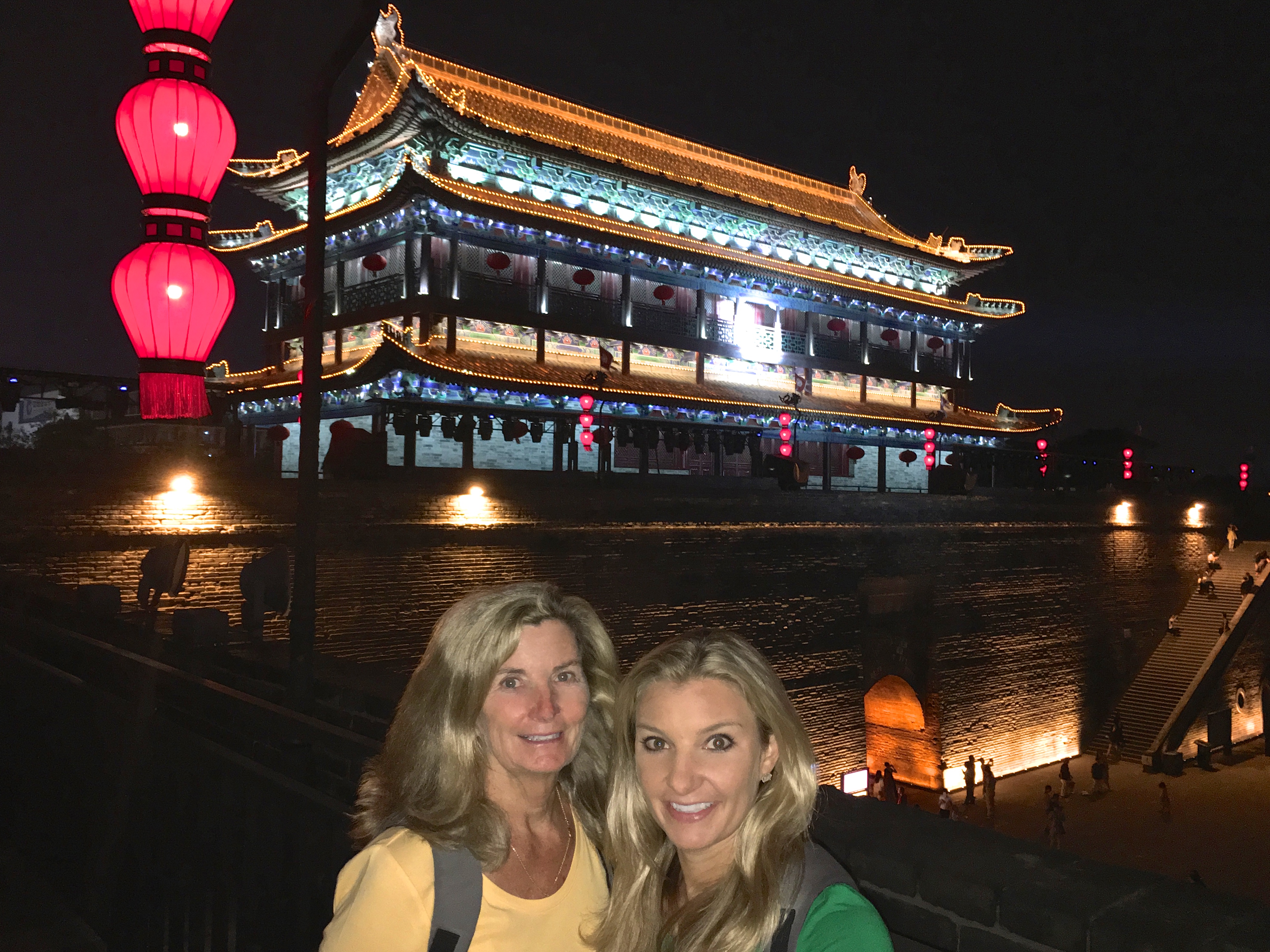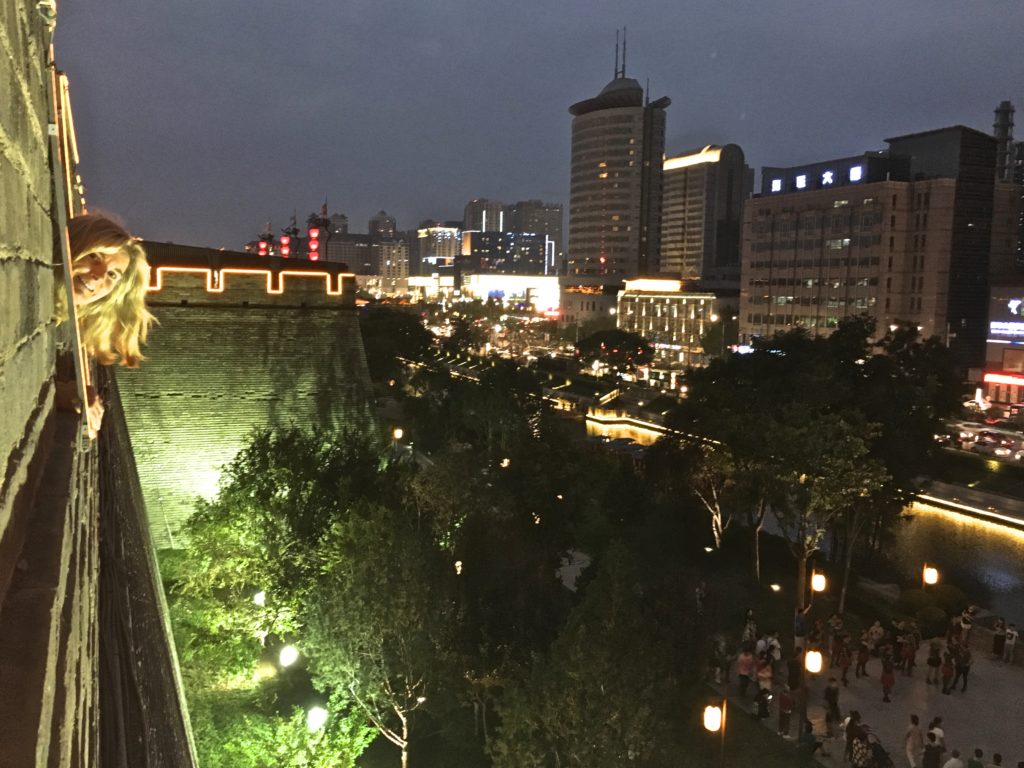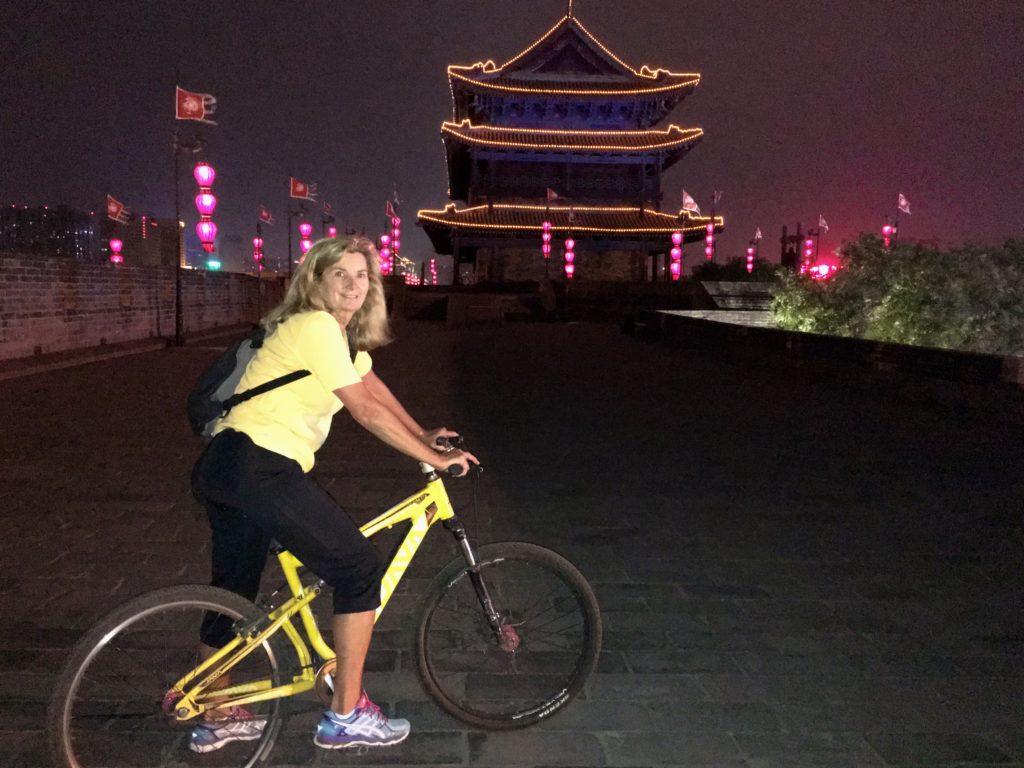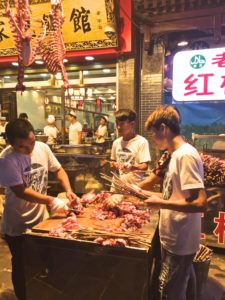
An Ancient Capital Still Reigns
This morning we said good-bye to the Guangxi region and southwest China to head 630 miles north to Xi’an, a city ranked as one of the top four ancient capitals in the world alongside Rome, Cairo and Athens. It’s also the start of the famed Silk Road and while it’s no longer the bustling trade route of years past, the city still retains the influences and culture from its connection to the Middle East.
We lost a bit of time due to our flight out of Guilin being delayed an hour and a half, but as soon as we touched down in Xi’an, we grabbed our bags and a taxi for the hour drive into the city. Both of our suitcases wouldn’t fit in the trunk, so I sat up front with the driver. I know I have previously commented on the traffic here in China, but now is a good time to go into details. Let’s just say that front row seat was one of the most intense thrill rides I’ve ever been on, and I’m always up for a good roller coaster or jump out of a plane. I’ve been to other countries where the driving is aggressive and fast… And it’s also all of these things in China. But there is another element here as well… Insanity. I’ve never seen anything like this. Cars just pull out in front of other cars. They turn left across four lanes of moving traffic. They come speeding up behind scooters, pedestrians and bikers honking incessantly expecting them to move out of the way or they’ll be part of the pavement. Intersections are complete chaos with cars coming from every direction fighting for positioning to dart through the maze of competing traffic to get where they need to go. It’s really something to see, but nothing I’d want to attempt from behind the wheel. This is all part of traveling though… experiencing the cultural differences and embracing them. So I held my breathe and told myself if this is how I’m meant to go, then so be it.
Still alive to experience another day, we arrived at our hotel. (Phew, because I would hate to miss out on the rest of this trip). We checked in and hit the road to start exploring, trying to make up for lost time. The air is much cooler here and we are relieved to have a break from the intense heat and humidity.

Xi’an is considered a medium sized city by China standards but is home to 8.46 million people… That’s medium?!?? The city center is surrounded by one of the oldest walls in China, built under the Ming Dynasty in the 14th century. The wall stands thirty-nine feet high, is made of tamped earth and rice, then later encased in brick. There’s a moat that encircles the wall in its entirety and with limited entrances in, plus the watchtowers and flanking towers, it was almost impossible to invade this ancient city.
A popular evening activity is to bike the top of the wall, a 13.7 km loop. So after we went up into the Bell Tower, a well-known Xi’an landmark once determining the geographical center of the ancient capital, we headed to the wall’s South Gate, climbed to the top, rented our bikes and off we went. Our timing couldn’t have been more perfect as the sun had just set and the city started to light up. It was an enjoyable ride and fascinating to stop and think about the history of these walls, their purpose and the dynasty they protected.

After working up an appetite, we opted for a cultural culinary stroll through the Muslim Quarter sampling the famous dishes sold at food stalls lining the pedestrian-only street. We tried the Chinese version of a hamburger – a mixture of hand-chopped beef and lamb, stewed for hours in broth with over twenty spices and then stuffed into a crispy flatbread… Delicious! We also tried the fried potatoes and the chip skewers, but weren’t brave enough to try some of the other interesting meat options, especially after seeing the animal skeletons hanging from hooks with the meat spread out on the table below being prepared. This is definitely not the place for vegetarians.
With Xi’an being the starting point for the Silk Road one thousand years ago, this neighborhood attracted merchants and students from Arabic countries, who came here for business or studies and ended up settling down. They are known as the Hui people and after generations of multiplying, their population has reached over 60,000. It was a nice glimpse into China’s Muslim culture and fun to imagine the excitement in the height of the Silk Road’s existence.
This blog entry was originally posted on www.DawnandKristenGoToChina.blogspot.com